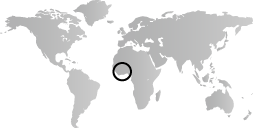By the turn of the twentieth century, all of the Guinea coast, with the exception of independent Liberia, falls under European rule. In British colonies, the policy of indirect rule relies on indigenous rulers and political systems. Confronted by an astonishing wealth of ancient and contemporary art, colonizers organize governmental bureaus and museum systems as showcases devoted to the collection and preservation of traditional material culture and archaeological sites such as Ife and Igbo-Ukwu in Nigeria. Newly created universities train African students in archaeological and anthropological practices, while contemporary artists such as Ben Enwonwu learn Western creative practices at local art schools and continue their training in Europe. In the post-independence era, a sophisticated and outspoken African intelligentsia coalesces at university centers such as Nsukka, Ife, and Zaria in Nigeria, producing literature, music, and artworks for both local and international audiences.


